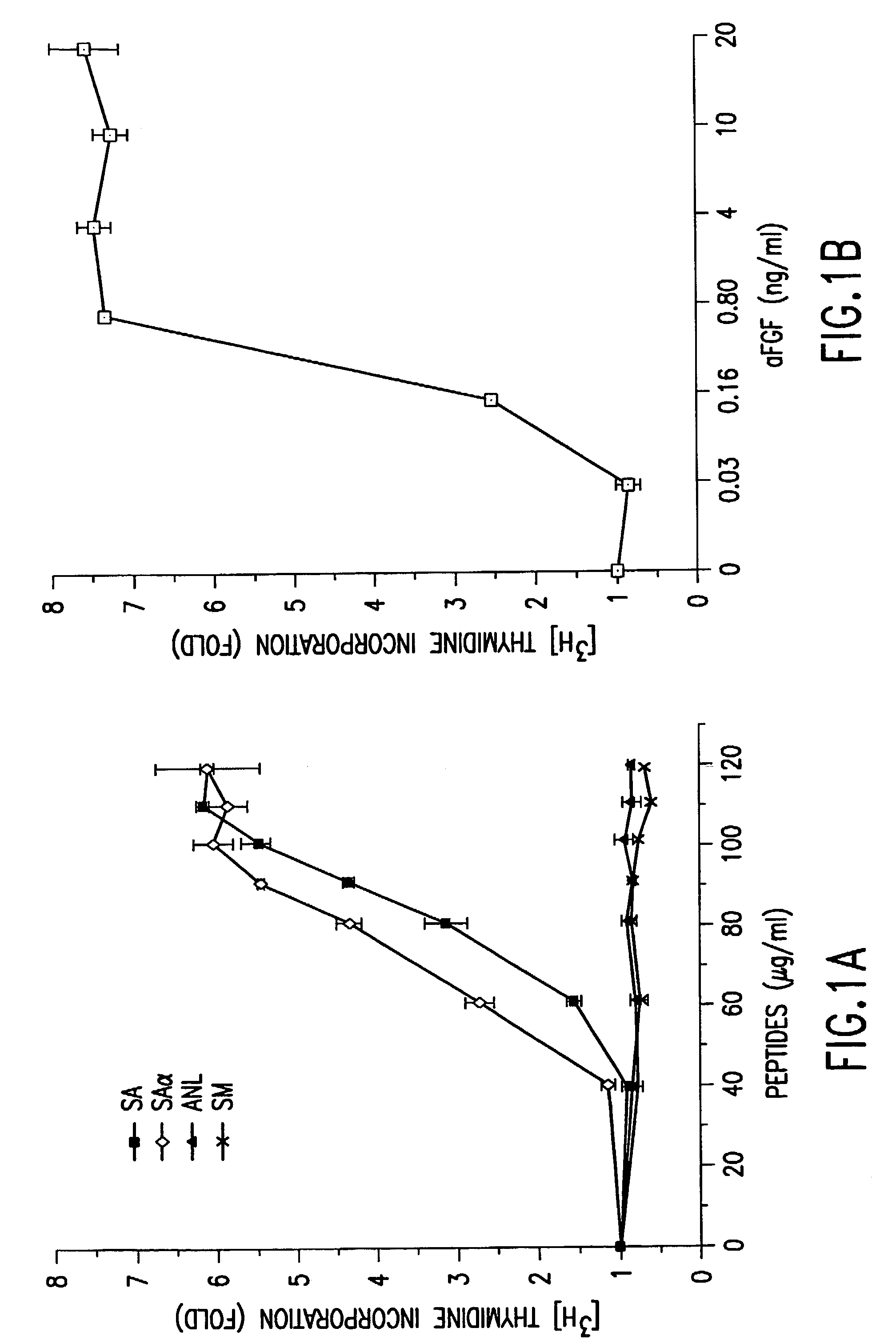Cell permeable peptides for inhibition of inflammatory reactions and methods of use
a technology of inflammatory reaction and cell, which is applied in the direction of peptide/protein ingredients, drug compositions, antibody medical ingredients, etc., can solve the problems of damage to cells, both methods have serious drawbacks, and the delivery of peptides into cells remains problematic, so as to prevent septic shock and treat or prevent septic shock
- Summary
- Abstract
- Description
- Claims
- Application Information
AI Technical Summary
Benefits of technology
Problems solved by technology
Method used
Image
Examples
example i
[0081]The peptides used herein were synthesized by a step-wise solid-phase peptide synthesis approach24 and purified by high performance liquid chromatography using C18 reverse phase column as described. 25 The exact molecular weights of the purified peptides were confirmed by mass spectrometry analysis.
[0082]Amino acid residues 1-16 of the SM peptide were patterned after the predicted signal peptide sequence of K-FGF16,17 (listed separately herein as SEQ ID NO:5), residues 17-19 were designed as a spacer, and residues 20-26 contain an epitope tag recognized by antibody (see SEQ ID NO:1). Amino acid residues 1-19 of the SA peptide are identical to those of the SM peptide. However, its carboxyl terminal residues 20-26 are same as the sequence of the ANL peptide (SEQ ID NO:2), which is derived from the nuclear localization sequence of acidic FGF.18 The SA peptide is listed as SEQ ID NO:3. The amino acid sequence of the SAα peptide was the same as that of the SA peptide except it had a...
example ii
[0105]The efficacy of the intracellular inhibition of nuclear import of NF-κB and other stress-responsive transactivators in abrogating in vivo changes resulting in lethal septic shock is based on the use of noninvasive intracellular delivery of the SN50 peptide containing a cell membrane-translocating sequence and NLS domain. 50-52 Two cell-permeable peptides, SM and SN50 were synthesized and purified as previously described, 51,52 and first tested in vitro in two types of cells known to be a target for LPS: murine macrophage J774 and endothelial LEII cell lines. (SM and SN50 peptides, listed herein as SEQ ID NOS: 1 and 9). The nuclear import of transcription factor NF-κB induced by septic shock inducer, LPS (10 ng / ml) in murine J774 macrophages was blocked by SN50 peptide but not by SM peptide (both at 31 μM). Whereas both peptides are cell permeable, the SM peptide functional domain contains “loss of function” mutated NLS sequence. 51,52 Similar pattern of results was obtained wh...
example iii
[0114]In this experiment, the effectiveness of this class of cell-permeable peptides in vitro with murine macrophages and endothelial cells was measured using SN50, carrying a nuclear localization sequence (NLS) derived from NF-κB1 (p50), SM, were synthesized and purified as previously described, 51,52 and a third cyclic peptide (cSN50) was designed by inserting two cysteines flanking NLS motif to form an intrachain disulfide bond. (cSN50 peptide, listed herein as SEQ ID NO: 12) All three peptides are cell-permeable, but the SM peptide functional domain contains a mutated NLS that is not recognized by importin α (also called karyopherin α or Rch 1). 52 In murine J774 macrophages, nuclear import of NF-κB in response to LPS (10 ng / ml) was blocked by SN50 but not SM (both at 100 μM). Similar results were obtained when J774 cells were stimulated with TNFα (20 U / ml), a proinflammatory mediator of septic shock. The SN50 peptide also inhibited inducible nuclear import of NF-κB in murine en...
PUM
| Property | Measurement | Unit |
|---|---|---|
| temperature | aaaaa | aaaaa |
| temperature | aaaaa | aaaaa |
| temperature | aaaaa | aaaaa |
Abstract
Description
Claims
Application Information
 Login to View More
Login to View More - R&D
- Intellectual Property
- Life Sciences
- Materials
- Tech Scout
- Unparalleled Data Quality
- Higher Quality Content
- 60% Fewer Hallucinations
Browse by: Latest US Patents, China's latest patents, Technical Efficacy Thesaurus, Application Domain, Technology Topic, Popular Technical Reports.
© 2025 PatSnap. All rights reserved.Legal|Privacy policy|Modern Slavery Act Transparency Statement|Sitemap|About US| Contact US: help@patsnap.com



